Saturday was our Spring Recital, and here’s a photo to share:
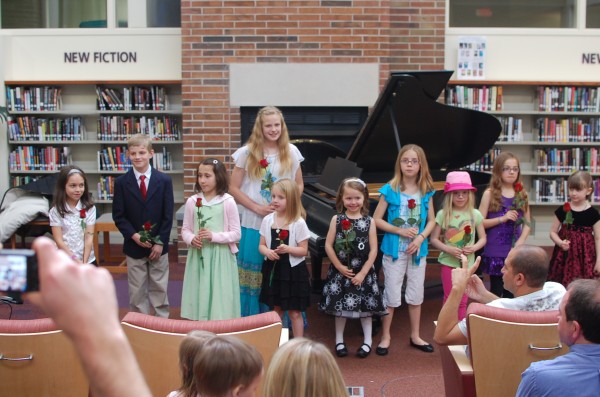
Just a quick post today! I’ll share more later this week.
Saturday was our Spring Recital, and here’s a photo to share:

Just a quick post today! I’ll share more later this week.
Here’s some blogs I’ve stumbled upon lately…
A Tad Bit Creative is a blog by Chrissa, who blogs about piano teaching among other creative and crafty topics. I love her photography too.
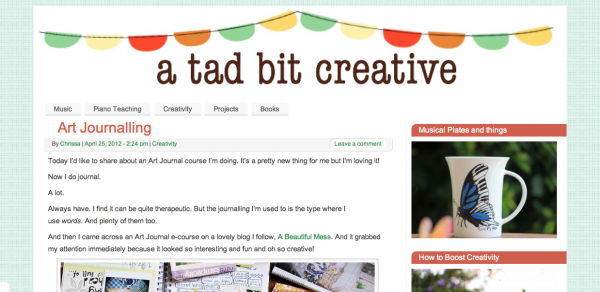
“Alas for those that never sing, But die with all their music in them!”
— Oliver Wendell Holmes
Every Wednesday brings Words of Wisdom here at the Color in my Piano blog in the form of a musical quote or joke, intended to bring inspiration or humor to the middle of your week. Have suggestions? Send me a message here.
As I mentioned last week, during my recent Piano Party/recital rehearsal I gave a listening sheet to my young beginners to complete as they listened to their fellow students perform. Here’s what it looked like:
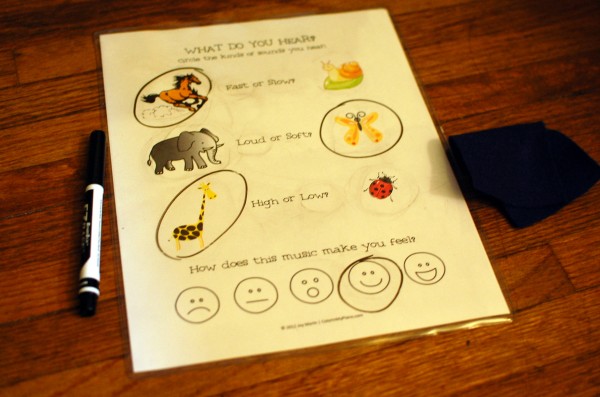
I put each sheet in a plastic sheet protector and gave them a dry erase marker with a piece of felt so they could re-use the sheet for each piece they heard. It worked pretty well — my students were very attentive and really liked telling me about what they circled between pieces!
This worksheet would also work well for private lessons or group classes with beginner students to use while listening to recordings — like Carnival of the Animals, or whatever.
I do wish the sheet protector cleaned off a little better. The ones I used have kind of a matte surface…maybe I need to get some of the thicker, shiny ones? Or try laminating?
Anyway, my students really enjoyed this listening sheet! I found the clip art on some various public domain clip art sites. You could easily design your own the same way. Or if you’d like to download mine, visit the Printables > Worksheets page and scroll down to the L’s for “Listening Sheet for Young Students.”
P.S.: As requested, I added a page to the Rhythm Value Cards pdf: three beamed eighth note cards for use in compound time signatures. (Thanks for catching that, Bee!)
I’ve been wanting to write a post about using music fonts for a long time. Finally, here it is! If you have been wondering how you can create your own music worksheets/resources, this guide will help you get started.
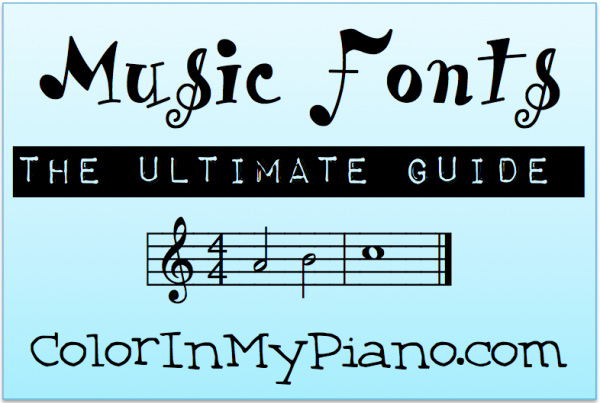
For my worksheets/materials, I use graphics exported from Finale about 30% of the time, and music fonts the other 70% of the time. The great thing about using music fonts is that anyone can use them, without having to buy an expensive program like Finale. However, using music fonts is a little more complicated than you might think. This post will attempt to demystify the process and point you to some links and resources. Continue reading “Music Fonts: The Ultimate Guide”
 Piano teacher KM Logan has sent me a copy of her ebook and asked if I’d be willing to review it, to which I happily agreed. Her ebook is called: “The Matthew 6:33 Piano Teacher: How To Teach Piano To The Glory Of God.” It is 79 pages in length and is available on her website, Amazon, and Barnes & Noble.
Piano teacher KM Logan has sent me a copy of her ebook and asked if I’d be willing to review it, to which I happily agreed. Her ebook is called: “The Matthew 6:33 Piano Teacher: How To Teach Piano To The Glory Of God.” It is 79 pages in length and is available on her website, Amazon, and Barnes & Noble.
In case you are wondering, here is the verse mentioned in the ebook’s title: “But seek ye first the kingdom of God, and his righteousness; and all these things shall be added unto you.” — Matthew 6:33 This ebook is written very much from a Christian perspective (which I very much appreciate), asking the reader to consider things like whether piano teaching is God’s calling for you, how God can make a difference through your teaching, and most of all, how the piano teacher can do all they do for the glory of God. Unfortunately, I’m not sure the book provides many clues for the answers to those questions, but it does ask you to consider those things.
Here are some comments regarding the ebook from a purely writing perspective. The tone of Logan’s writing is very conversational, which has its benefits and downsides. The writing is easy-to-read, but I feel the eBook would benefit from a more academic style of writing. For example, if I were the editor, I would eliminate all the contractions and restructure the sentences so they don’t use “you” so much (so the writing doesn’t sound as “preach-y” and direct). Also, I hope you like rhetorical questions, because the author makes use of them a great deal throughout the ebook! For example, the eBook opens with 9 questions in a row. Continue reading “Review: The Matthew 6:33 Piano Teacher eBook (and giveaway)”
 Yesterday, I transferred the email daily blog update service over from Feedburner to MailChimp. I’ve been using MailChimp to handle weekly blog update subscriptions, and have been pleased with everything about it. Now that MailChimp is handling both, you will find it easy to switch between the two at any time – which you can do by entering your email address into the subscription box in the sidebar. Mailchimp will recognize that you are already on the list and lead you through the option of updating your preferences.
Yesterday, I transferred the email daily blog update service over from Feedburner to MailChimp. I’ve been using MailChimp to handle weekly blog update subscriptions, and have been pleased with everything about it. Now that MailChimp is handling both, you will find it easy to switch between the two at any time – which you can do by entering your email address into the subscription box in the sidebar. Mailchimp will recognize that you are already on the list and lead you through the option of updating your preferences.
So, those of you who are getting daily blog updates in your email in box should be viewing the new email look right now! Hopefully, the transition was smooth – let me know if you have any problems of concerns. The rest of you should be pretty unaffected by this change. 🙂
 Australian composer Daniel McFarlane has composed a number of student-level repertoire books which are available on his website. Daniel was kind enough to send me digital copies of his books so I could review them here.
Australian composer Daniel McFarlane has composed a number of student-level repertoire books which are available on his website. Daniel was kind enough to send me digital copies of his books so I could review them here.
In appearance, all of Daniel’s books have easy-to-read scores with no illustrations. The titles of each piece are in fun fonts depending on the subject of each piece.
All of Daniel’s books can be purchased in hard copies or as digital copies (be careful that you’ve selected the right one when you check-out! The digital ones clearly say “Digital Edition” in the title, and allow for one print-out of the book). The prices for the music of Daniel’s website are in Australian dollars. Daniel assured me that when you check-out, the conversion to your currency would be made properly. The current rate of AUD compared to USD is about 1:1.
 Soundscapes Book 1
Soundscapes Book 1The pieces in Sounscapes Book 1 have a pop-ish and almost rock music sound to them, while retaining elements of classical music and good educational writing for students. The pieces feature repetitive patterns and chord progressions, catchy tunes, lyrical RH melodies, syncopated rhythms, and repeated LH notes.
I would use this book with an early intermediate student (probably no younger than age 9) who has good technique and an excellent sense of rhythm. It could also be a great option for teenagers or adult students at that level of playing. The pieces are very appealing in sound and would be a great option for boy students.
As you read this review, open another window and listen to the pieces here. Continue reading “Review: Daniel McFarlane’s Repertoire for Students”
“I have my own particular sorrows, loves, delights; and you have yours. But sorrow, gladness, yearning, hope, love, belong to all of us, in all times and in all places. Music is the only means whereby we feel these emotions in their universality.”
— H.A. Overstreet
Every Wednesday brings Words of Wisdom here at the Color in my Piano blog in the form of a musical quote or joke, intended to bring inspiration or humor to the middle of your week. Have suggestions? Send me a message here.
Here they are…the rhythm value cards I mentioned in my post yesterday!
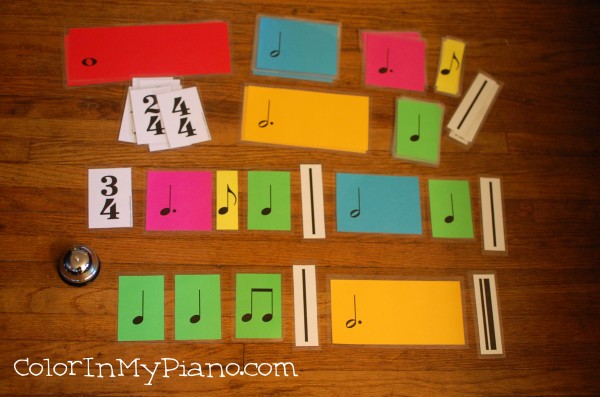
Continue reading “Rhythm Value Cards for Dictation and More”
On Saturday, I held a Piano Party for my students. It was basically a group lesson and rehearsal for our Spring Recital which is coming up in a few weeks. Most of my students have never met each other, so this was a good opportunity for them to learn a little about each other and to share their pieces. I’d like to hold group lessons more regularly now that I have enough students to do so…..so this was a good start!
Here’s what we did:
Here’s a new free music worksheet that I just added to the Printables page:
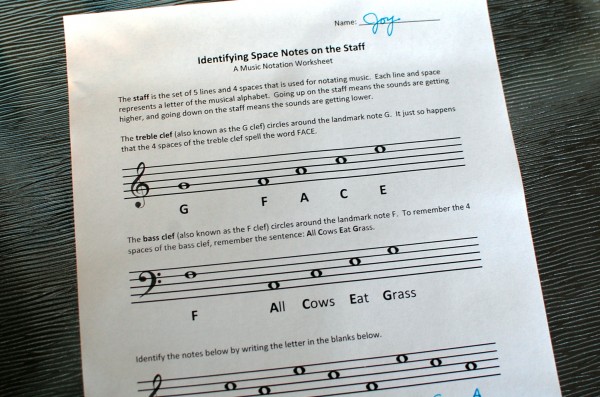
This worksheet introduces the idea of identifying the space notes on the staff using the mnemonics FACE and All Cows Eat Grass. These are the only two mnemonics I use. I don’t teach separate mnemonics for the line notes anymore (like Every Good Boy Deserves Fudge or Great Big Dogs Fight Animals) because it’s simply too much to try to keep 4 different mnemonics straight! I have found that it’s easier for students to remember just two mnemonics and then learn to jump up a step from the nearest space note to identify a line note.
To download, visit the Printables > Worksheets page and scroll down to the I’s for “Identifying Space & Line Notes on the Staff.” Enjoy!
 Identifying Space & Line Notes on the Staff worksheets (170.6 KiB, 55,911 hits)
Identifying Space & Line Notes on the Staff worksheets (170.6 KiB, 55,911 hits)
Your Cart is Empty